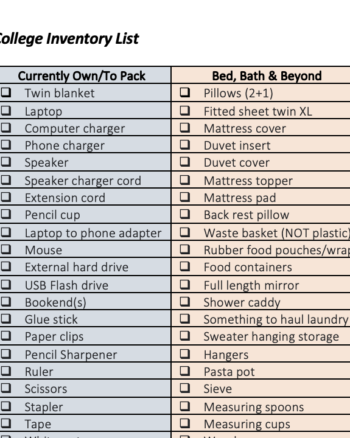 Here are the ten things I wish all parents of high school sophomores knew about the college admissions process:
Here are the ten things I wish all parents of high school sophomores knew about the college admissions process:
1. Take your child to see four types of schools ASAP, to narrow down (at least a little bit) the TYPE of school they like:
- Big school, small town
- Big school, big town
- Small school, big town
- Small school, small town
2. Understand college admissions vocabulary:
- Reach school, safety school & match school
- Difference between SAT and ACT. And, what is “Superscore”?
- Early decision, regular decision, early action
3. Seek out your child’s transcript and current GPA right now. List out the classes still needed to graduate. Make a guesstimate of your child’s GPA at the end of Junior year — that’s the one the colleges will see.
4. Understand weighted GPA. Some schools do it; some don’t. Learn what having an “H” means (classes where your child has earned the Honors credit) next to a grade on their transcript. Is your school offering AP classes? What do either types of classes do to a student’s GPA? If your child is not pushing to earn AP / Honors, have an open dialogue about what it would take and what value it would provide, if any. It may help their motivation. I’ve heard from my senior that the classes where she followed the Honors curriculum were more meaningful and inspiring.
5. Get onto the Naviance website. To make best use of this site, you need to get a login from the school and set a password to share with your child. Both parent and child should feel comfortable sharing an account and be able to navigate onto the site throughout the college admissions process. To properly onboard, I recommend spending about three hours on this site to get acclimated. Naviance links to the Common Application. Most high schools uses Naviance to track applications and send school documentation. Applications are submitted, status updates are communicated, scattergrams are created. I LOVE the scattergrams. They are school-specific acceptance graphs of dots corresponding to GPAs and test scores of the applicants from your school to that college. The points are green (accepted), red (declined) or black (wait-listed). This data allows you to estimate if your child is in the green or red zone, or whether this school is a safety school or a stretch school.
6. Get onto the SAT website or ACT website and write down all the test dates in your area. Schedule a test prep class (online or in-person) for six to eight weeks before EVERY time your student takes the test. The scores drop the longer the student has been away from test prep mindset. It’s not enough to do the class once. Your student will be more likely to make gains to their test scores if they repeat the class before the next test. Make sure students are well rested and calm. Read the rules about what they can bring. Bring your most prepared, calm, parenting self in the car on the way to the test. Be quiet and supportive. Breathe.
7. Print out the college visit calendar for the next year which may be found on your school’s website. Highlight the colleges of interest and be sure the student attends as they need to get their email address on the list at the presentation. Even better, have your student get the card of the presenter and send a follow-up email. There is a high likelihood that the person giving the presentation is the person who will be screening/reviewing your student’s college application. If your high school doesn’t plan to host the college your student is interested in, have them attend the college presentation at another school. (The college may have time to only go to a handful of schools.)
8. Stack the deck by taking all the “gimme” points. I have a theory, your child’s email is not only associated with their application, GPA and test scores; it is also linked to a database of checkboxes, each worth “points” if they’re checked off. Schools don’t want to simply have an enormous amount of people applying; they also want to have a great yield. They know most students apply to multiple colleges. So, they look for creative ways to discern interest in hopes of accepting people that will be likely to ACCEPT their admissions offer. They do that by creating a database of checkboxes associated with your student. Did the student attend the college visit at their school? Did the student visit the college in person? Did they follow the school on social media? Did they sign up for the website newsletter? Did they open the email? When you attend a college conference, you are offered a unique card to be scanned at each booth you visit. Guess what is translated to that college when your card is scanned? Your child’s email address. Yep, it’s another checkbox.
9. Begin to log community service hours. Many schools are encouraging students to keep track of their hours of service. If so, is your student on pace? My children’s school requires 90 hours of service to be logged in order to graduate. Participating in community service may help your child find/refine their passion. When a student has come alive and is highly motivated by their service, it’s going to be easier to frame their college essay.
10. During your child’s sophomore year, don’t talk about college — talk about grades, work ethic and passion. Their passion is what will propel them to write an authentic story in their college essay.
Being well-informed may be a daunting challenge when it comes to college admissions, but by following these steps you will feel more calm and aware you are doing what is necessary as a parent in today’s college admissions process.


